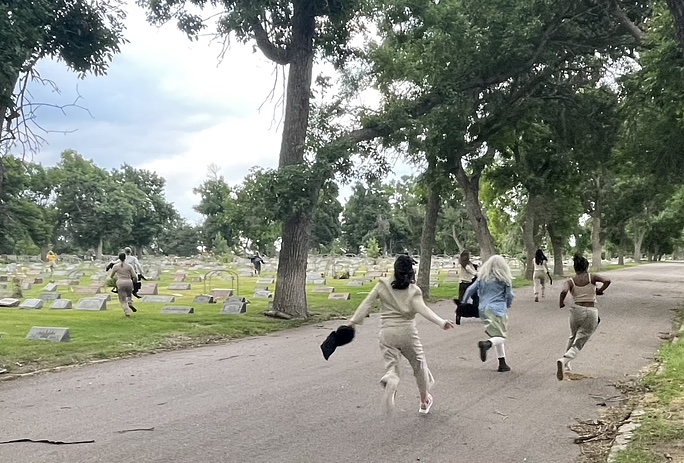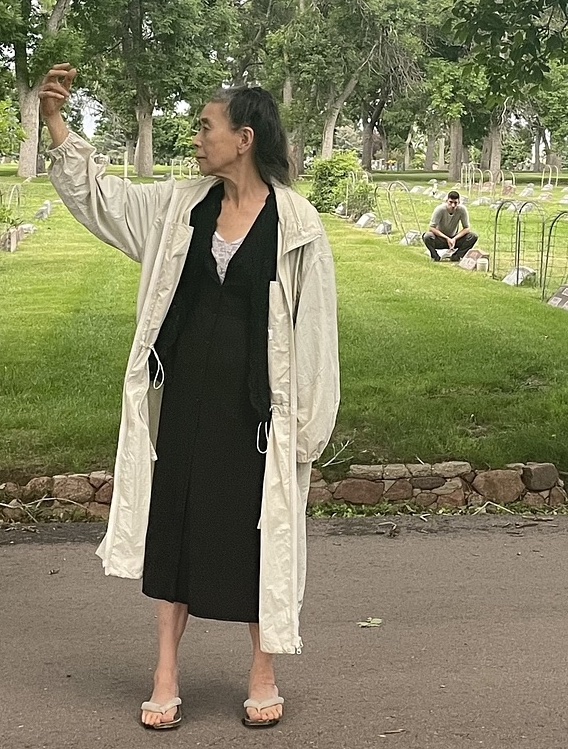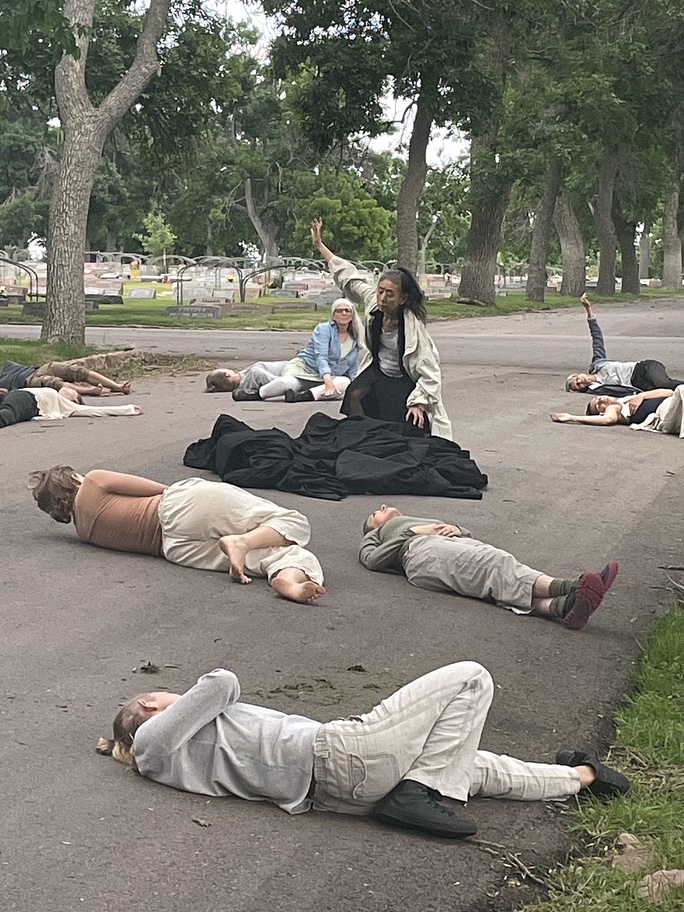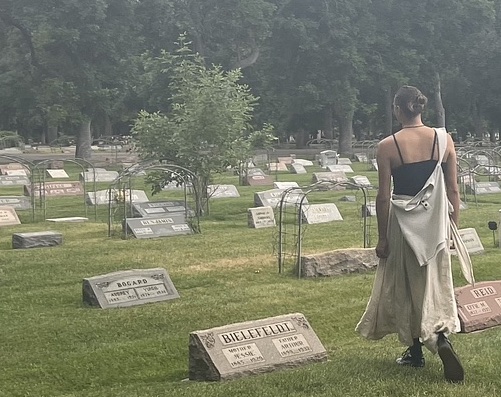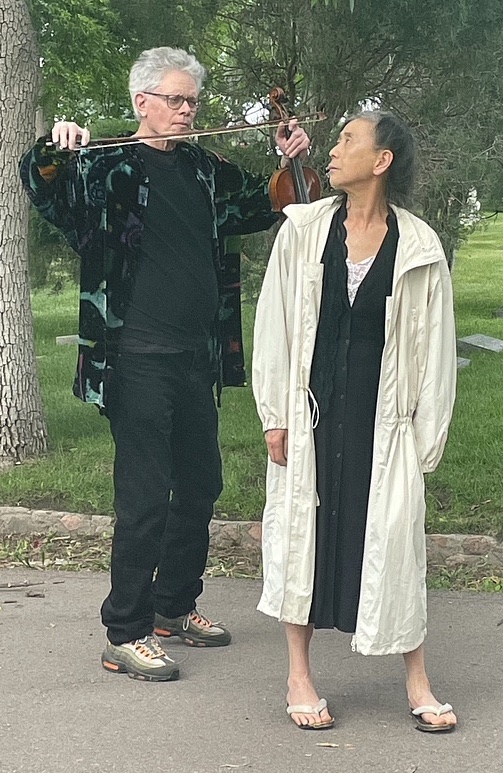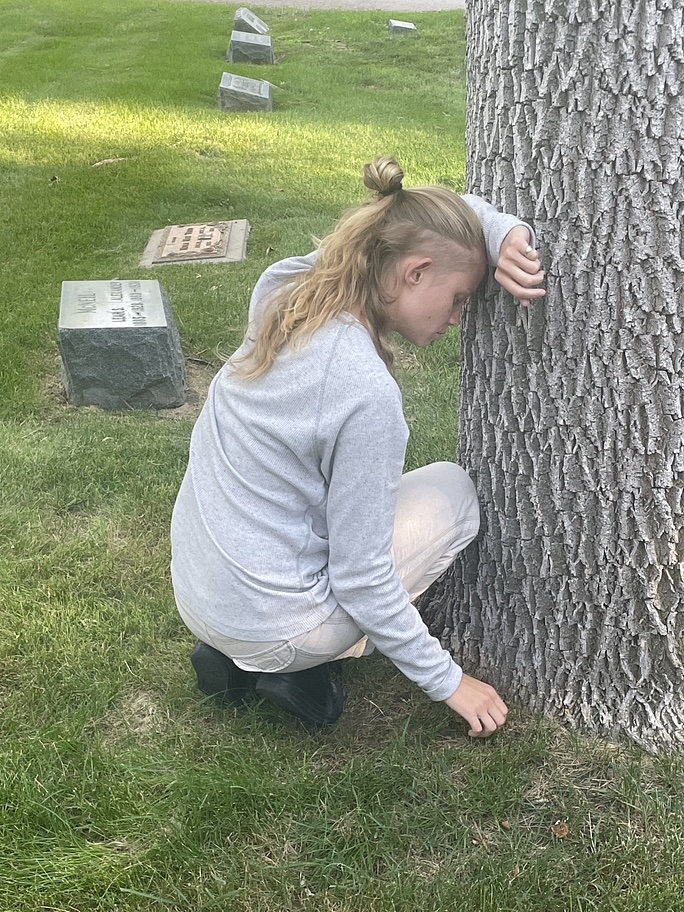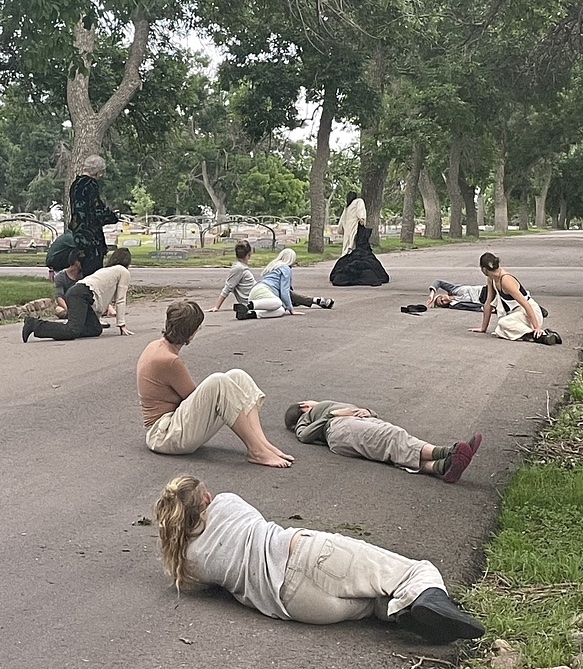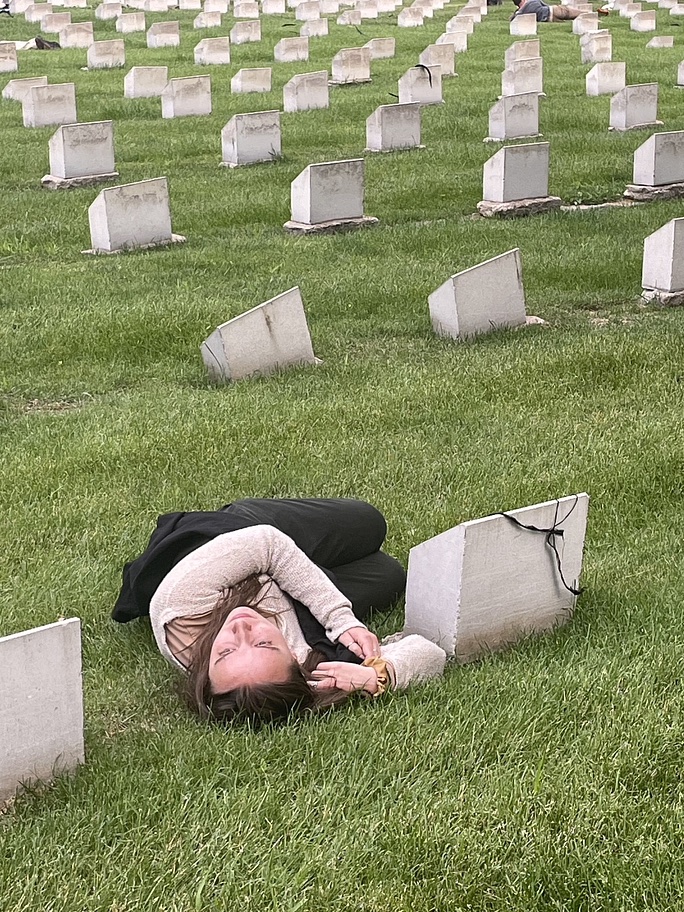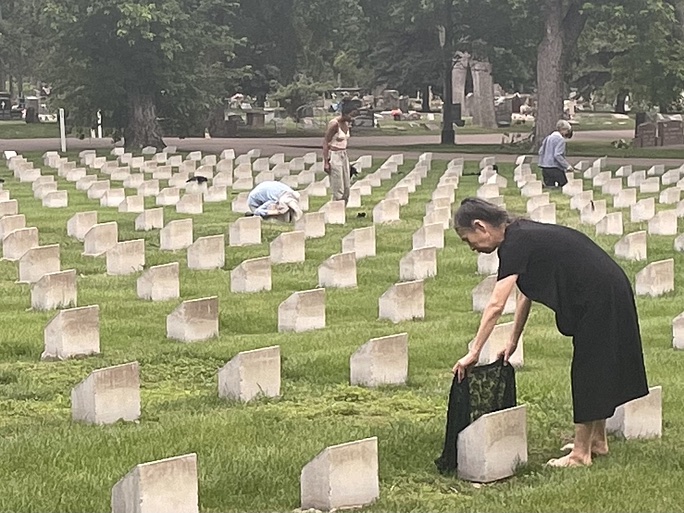On Thursday, July 6, I visited the historic Evergreen Cemetery in Colorado Springs, the stage for artists Eiko Otake and David Harrington’s With the Dead. The group performance, an adaptation of Otake’s 2020 show at Green-Wood Cemetery in Brooklyn, NY, included eight CC alumni dancers: Will Burglechner ’23, Mekael Daniel ’20, Marley Ferguson ’19, Soren Kodak ’20, Darryl Filmore ’20, Emily Ng ’20, Anya Quesnel ’23, and Holli Wenger ’23.
The evening began with a talk led by Harry Weil, vice president of education and public programs at Green-Wood Cemetery. In his discussion, he spoke with Evergreen Cemetery Director Cheryl D. Godbout and Dianne Hartshorn of Heritage Evergreen about the history of cemeteries, their place in the Victorian age as romantic spaces for people to enjoy nature and art, and how they are each working to once again make cemeteries spaces for the living.
“Art enters into the conversation of death and dying in such a unique way,” says Weil. His goal is to create programs that get people comfortable with the uncomfortable. “We have become a death-denying society. With these performances, we bring it back into our daily lives. We can face and embrace the emotion and deal with our own mortality.”
After the talk, guests were ushered outside to where the roads of the cemetery were lined with the graves of Colorado Springs’ history. This is where the performance began. I’m not sure exactly what I was expecting when I agreed to write about a dance performance in a graveyard. Different? Sure. Spooky? Maybe. But was I expecting every repressed ounce of grief that I had tucked away inside of me to be exposed? Absolutely not.
But grieve I did, as this was the central focus of With the Dead. It started with dancers participating in a walk that resembled a funeral procession, calling each other into the fold and leaning on one another for support, with the audience following closely behind, all accompanied by Harrington’s haunting violin. At the center of the cemetery, Otake danced and lamented over a large piece of black cloth – the manifestation of her grief. And then, once the group collected around her, she began to tear the cloth into strips. One by one, the other dancers joined, tearing strips and sharing them with each other, passing on and sharing the weight of their grief. Once the cloth was divided throughout the group, some pieces spread into the watching crowd, the dancers, led by Otake, scattered into the graveyard, each finding tombstones to mourn over and reflect upon.
Otake notes that cemeteries are places of memory and contemplation, where a community’s stories and histories lie, where we are reminded of our mortality. During the pandemic, she performed in two cemeteries to reflect on and converse with the dead.
“You can’t really come to the cemetery and not think about death or the people who have died. We know more about living. But we all die,” Otake says. “I thought that performing was my practice of dying. But the practice of dying is not dying. We learn about death by attending to other people’s dying. But we also learn about death by missing the dead.”
For me, Otake’s performance was a powerful and moving experience. It exposed areas of grief in my life in the very space that we often consider to be an endpoint. This time, however, connecting back with Weil’s focus for visitors and the very essence of Otake’s art, it was a space to reflect on life and what we carry through it.
While another graveyard dance is not scheduled during her time in Colorado Springs, you can see Otake’s exhibit, Eiko Otake: I Invited Myself, vol. II through July 29 at the Colorado Springs Fine Arts Center at Colorado College. As her first museum solo-exhibition, I Invited Myself, foregrounds the artist’s video and media, which have developed alongside her dance, choreography, and performance installations. Rather than presenting a cohesive overview of the artist’s career, the exhibit places an emphasis on transition over statis. Viewers are strongly encouraged to return as select media will rotate over the course of the exhibition.




